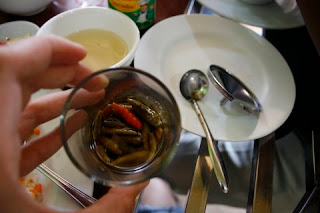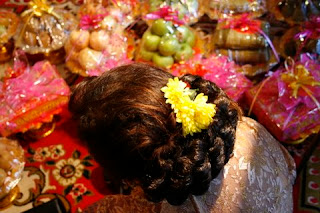 Someone painted the stars the wrong way, originally.
Someone painted the stars the wrong way, originally.There is something a little tragic about Subic and Olongapo, former US Naval home in the Orient. Sterile lodging a la middle-of-nowhere California, sprawling roads, proper driving, short shorts, neon, large industrial compounds, and the desolation of a former boom town. The guide talks fondly about "the former this-and-that" and what once was.
 And stripes.
And stripes.Foremost in sadness are the "duty free" stores, which still carry all forms of Amerikano rubbish like corn syrup-sweetened chocolate, bad shampoo, nylon socks, Nair, and LA Gear or something. However, the last decade has seen the entry of just about every product into the market, and PX stores have gone the way of hairspray and benders. Slowly, domestic tourists stopped trekking to Subic for their fill of Poppycock. One of their strongest unique selling propositions to the outside world (especially the big spenders of Manila) was lost.
 Always full.
Always full.Inside a Subic discount store, prices are symbolically written in dollars, but everyone pays in peso. The non-competitive nature of American prices now requires the use of shelf space by products from China and everywhere else. White lights, dollar-store cheese-- enough to make me step outside and hang around the shawarma vendor. It depresses the Hesukristo out of me when I'm in some sprawling US town, but infinitely more when I'm in my own country.
 Ya, it makes me pretty sad too.
Ya, it makes me pretty sad too.As our long binge on American colonialism fades, the regular Filipino's ideas of luxury and affluence will change, probably last in this place. Hopefully, some sense will creep back into Subic and Olongapo, and the place will become alive again. The revolution will not come from the halls of gyrating girls and their song-and-dance numbers. As Filipino demand reflects in the changing inventory of former discount stores, domestic tourists and inhabitants who want more than just the shadow of an occupation will hopefully reclaim this beautiful coastal mass.
 Watch repair, encouraging informal economy signal.
Watch repair, encouraging informal economy signal.

























































